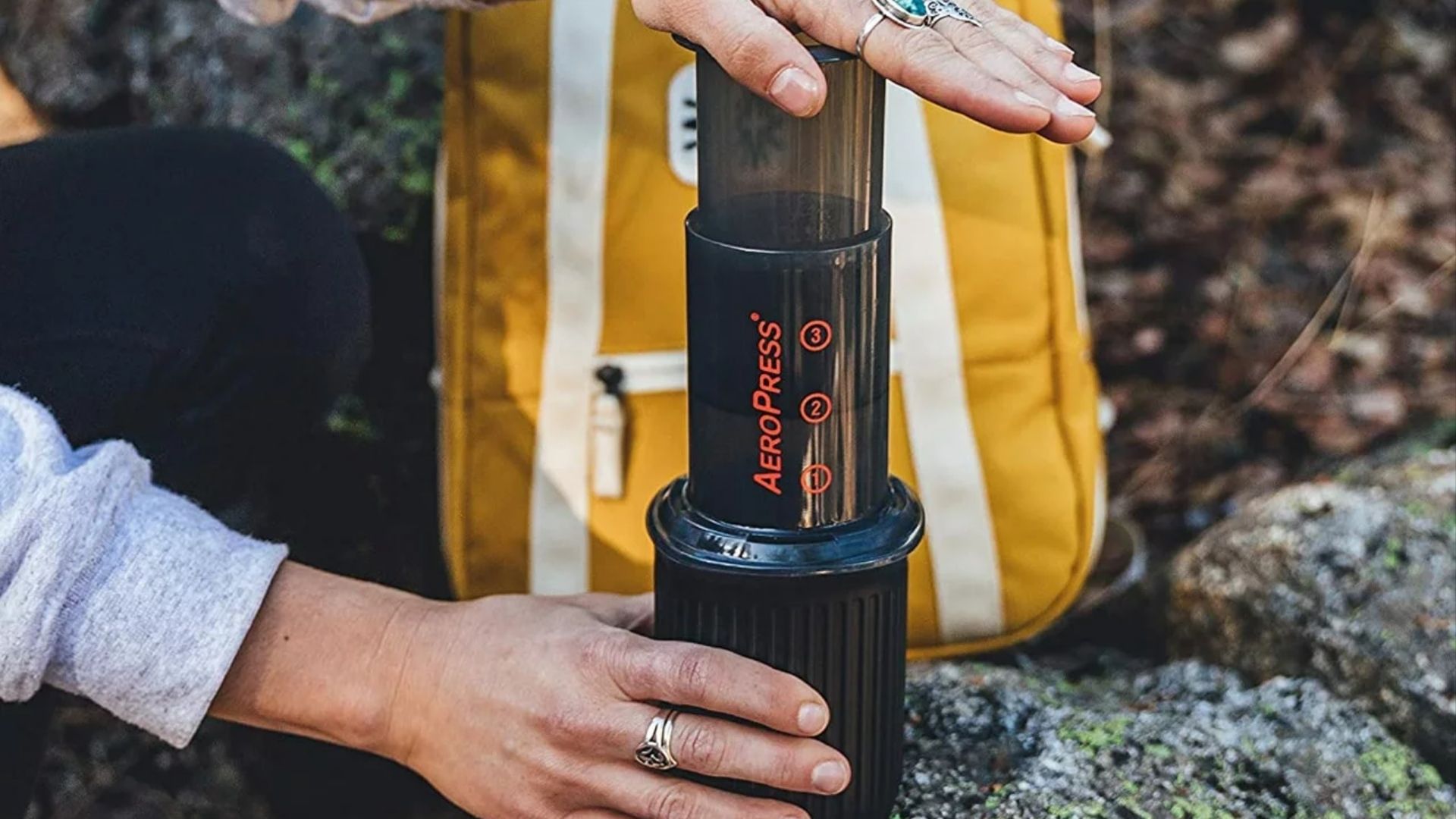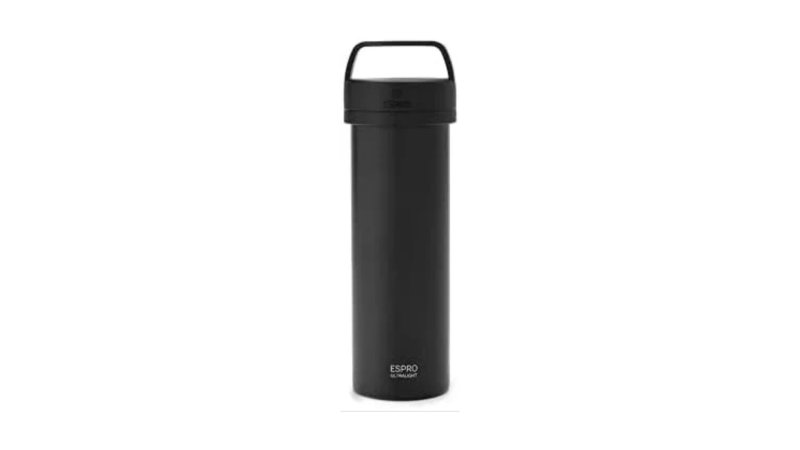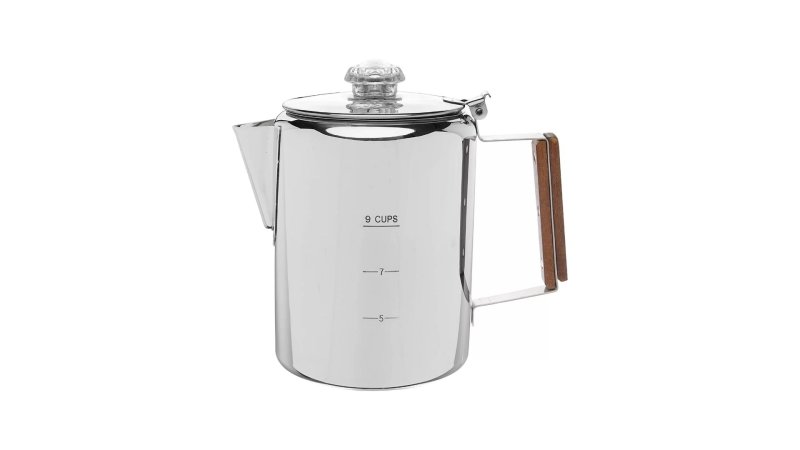

We may earn revenue from the products available on this page and participate in affiliate programs.
Whether your campsite tends to be a dozen feet from a car or in the middle of the Pacific Crest Trail, there’s a powerful, invigorating feeling evoked when the aroma of freshly brewed coffee floats amongst the tents on a chilly, mist-shrouded morning. A successful camping trip requires — at a minimum — certain essential items, right? Shelter, dry clothes, food, and a great camping coffee maker — because even when all else goes to hell, having a hot cup of joe can set your mind right and help salvage the worst of camping experiences.
But camping by definition makes cooking, in general, more challenging than when you’re at home, and this is also true for making coffee. You can’t just throw a Mister Coffee into your backpack, so now you’ve got to decide how to brew the nectar of the gods. Don’t worry, we’ve got you covered. By the time you’ve finished this guide, you’ll know exactly what kind of camping coffee maker you should get to ensure that, no matter what may come during your next outdoor adventure, at the least you’ll face it properly caffeinated.
Methodology
As always, personal experience, internal and external expert opinion, product research, and user reviews help decide what to include in this guide. I’ve spent a lot of time camping, backpacking, and hiking in Alaska, the Smokies, along the Appalachian mountains, and areas in between (to say nothing of deployment time in austere environments), and access to coffee is always a prime consideration. So I started pulling this list together by using this experience to scour the internet for coffee makers that could feasibly be used in the great outdoors.
Since any camping gear necessitates a certain degree of ruggedness and portability, these two characteristics guided our choices considerably. Plus, the product had to be functional in the isolation of a campsite (or deployment site). Weight and size are key considerations for campsite coffee makers, and you’ll see that, with one exception, all the gear on this list are very lightweight and compact. Bottom line, the coffee makers that made this list had to be able to produce a good cup of joe, with minimal setup and teardown. Plus, it had to be tough enough to be banged around a bit.
As I narrowed down the contenders, I compared my list to other gear experts to see how our picks lined up. The outdoor experts at OutdoorGearLab, CleverHiker, and REI all curate great lists, and there are a number of areas where we overlap. I then determined the finalists by carefully reviewing product pages, both from the makers when possible, and on Amazon or other third-party vendor pages as well. Only products with an overwhelming percentage (greater than 70 percent) of positive reviews could make the cut. Click here for more info on our methodology.
Best Overall
AeroPress Go
Pros
- Compact and lightweight
- Innovative design maximizes simplicity and flavor
- Easy to clean
Cons
- Uses microfiber paper filter, so be sure to not run out of them
Product Specs
- Type: Pressure
- Weight: 11.2 ounces
- Filter type: Paper microfilter
Best Value
Primula Brew Buddy
Pros
- Great price
- Simple design makes coffee in minutes
- Very easy to clean
Cons
- Can brew only one cup at a time
- Coffee can be weak unless you let it steep at least 5 minutes
Product Specs
- Type: Steeping/pour over
- Weight: 0.96 ounce
- Filter type: Fine mesh
Editor’s Choce
ESPRO P0 Ultralight Travel Press Bottle
Pros
- Lightweight but durable
- Can make coffee with or without paper filter
- Double-walled and vacuum-sealed helps keep coffee hot
Cons
- Although 16-ounce capacity, only makes 12 ounces of coffee
- Plunger can be hard to push down
Product Specs
- Type: Steeping/French press
- Weight: 7.40 ounces
- Filter type: Double micro-filter
Best Portable
Widesea Camping Coffee Pot
Pros
- Larger (25-ounce) brewing capacity
- Coffee maker can double as your mug
- No paper filters
Cons
- Aluminum mug means heat retention not great
- Filter doesn’t keep all grounds from getting into your coffee
Product Specs
- Type: Steeping/French press
- Weight: 8 ounces
- Filter type: Metal microfilter
Best Espresso Maker
WACACO Nanopresso Portable Espresso Maker
Pros
- Delicious espresso with no battery or electric power needed
- Comes with durable travel case
- Cup included and attached to espresso maker
Cons
- Some precision needed for best results; may want to practice before camping
- More complicated than most camping coffee makers
Product Specs
- Type: Pressure/espresso
- Weight: 11.9 ounces
- Filter type: Integrated filter basket
Best Percolator
Coletti Bozeman Percolator Coffee Pot
Pros
- Stainless steel and durable
- Optional paper filter use
- Can make 9-12 cups (depending on model)
Cons
- Heavy, not ideal for backpacking
- Percolator knob can chip if dropped
Product Specs
- Type: Drip, percolator
- Weight: 2 pounds
- Filter type: Metal mesh, paper optional
Best French Press
GSI Outdoors Personal JavaPress
Pros
- Comes with nested drinking mug
- Tight sip-it lids prevent spills, great for uneven campgrounds
- Silicone-ringed plunger ensures grounds don’t mix with coffee
- Lifetime warranty against defects
Cons
- None to speak of!
Product Specs
- Type: Steeping/French press
- Weight: 10.8 ounces
- Filter type: Mesh filter
Best Backpacking Coffee Maker
GSI Outdoor Ultralight Java Drip Coffee Maker
Pros
- Collapsable and lightweight
- Uses standard #4 coffee filter
- Able to brew up to 12 cups of coffee
- Lifetime warranty against defects
Cons
- Separate paper filters to keep track of
Product Specs
- Type: Drip
- Weight: 6.3 ounces
- Filter type: Paper
Our verdict on camping coffee makers
There are a lot of choices when it comes to camping coffee makers, and the trick is to make sure what you want fits the type of camping you plan on doing. If you want to ensure your camping is fueled by great coffee, you can’t go wrong with the simple and durable AeroPress Go. If you want to spend a little less and demand a smaller footprint, then the Primula Brew Buddy is the perfect coffee companion.
What to consider when buying a camping coffee maker
While there are numerous types of coffee makers, there are four broad categories: those that brew via pressure, those that allow the grounds to steep, those that brew via drip, and, finally, those that brew by boiling.
Types of camping coffee makers
Pressure brew
This kind of coffee maker extracts the coffee goodness by forcing boiling/hot water through it via high pressure. Espresso is the result, and products like the AeroPress Go and the GSI Outdoors Personal JavaPress use it quite effectively using only manual power. To make a full cup of coffee, you typically have to add additional water after it’s brewed. These are less common (and tend to be a little more expensive) for camping simply because of the need for perfect seals and high-pressure mechanisms.
Steep brew
A steep brew is one of the most simple, yet effective, methods of brewing up your coffee. While it’s often associated with the French press, all you need is a pot to add your hot water to the grounds; let it steep for three to five minutes, depending on taste; and then use something to push out the grounds and leave behind just the coffee (in the case of the French press, this would be the plunger).
There are other steep brew coffee makers out there, including coffee in tea bags, and the siphon-style that does a cool little magic trick by heating the water in a lower vessel, which is connected to a higher vessel via a tube of some kind. When the water gets to the boiling point, pressure forces the water into the upper chamber where the coffee grounds are. You then remove the heat source, and as the coffee cools, it slowly trickles down through a special filter back into the lower chamber. It’s not actually too complicated, but awkward enough that you probably don’t want to take it camping.
Drip brew
Dependable coffee makers like the Mister Coffee you have at home, and the trusty percolator coffee maker, fall into the drip brew category. This is a fundamentally simple type of coffee maker and is capable of making a lot of coffee at once. Water is boiled, then rises (in the case of a percolator) into the where the grounds are stored, where it continues to boil until the heat is removed and the coffee drains through a filter to leave behind the grinds (and some oils, if you’re using a paper filter).
This simplicity of design makes percolators great coffee makers for camping, although the larger ones are likely too bulky and heavy for backpacking into more remote areas.
Boiling brew
This is the most basic way to make coffee, and the most common example is often called “cowboy coffee.” While there are some ways of making the most of this (check out this post from The Roasterie for a more nuanced method), you’re literally just boiling water with coffee grounds in it. After a few minutes, the grounds will be floating on a layer at the top, so sprinkle some cold water on top to make it sink. Then just pour carefully for a stout, slightly crunch cup of joe.
During my research for this article, I asked a Facebook group for Appalachian Trail hikers what they did for coffee, and a couple of them actually replied they use this method. Their reasoning was simple: They needed a caffeine jolt but didn’t want to carry around a coffee maker. The trade-off, unfortunately, is flavor and smoothness.
Key features of camping coffee makers
Coffee makers designed to make your brew while camping are more spartan affairs than the ones you have in the kitchen. At home and with electric power, you’ve got a number of key features you want: temperature setting, brew strength, type of filter, and how fast it produces the good stuff. Unless you’re glamping and simply lugging around a full-sized espresso machine in your RV, the camping coffee maker has only a couple of essential features to consider.
Size
How large of a coffee maker do you want to transport to the campsite? If you’re car camping, then a larger and heavier coffee maker will serve you and your party very well. But if you’re backcountry camping or backpacking, then you’ll likely pay closer attention to how much room it takes up. But remember, most coffee makers have cavities that can store other things while you’re hiking, so you may be able to offset the room taken up by a larger pot by putting your coffee and other small items within it.
Filter
Pretty much all coffee makers need a filter of some sort to keep grounds from getting into the finished product. Coffee makers use either integrated filters (like the mesh filters on a French press plunger), or they need paper filters. The downside of some camping coffee makers is they need specially made paper filters, which is only a problem when you realize you’re out of them, or maybe you forgot to pack them.
One can debate the flavor superiority of paper vs metal/mesh filters, but the important thing is understanding what you have and planning accordingly. While it’s true that integrated filters never run out, some mesh filters can fray over time, which leads to a crunch coffee experience.
Weight
As with size, the weight of the coffee maker comes into play depending on the type of camping you plan on doing. Large metal percolators can easily liven up your car camping experience, but you may be cussing about dragging it to your campsite on top of a mountain. Many backpackers who shed every possible extra ounce from their loads will identify a “luxury item” to bring. Like many, my luxury item is my coffee maker. Be sure to factor in the weight you’re willing to carry to your campsite.
Pricing for camping coffee makers
For the most part, camping coffee makers are pretty simple pieces of gear: You need something to hold your coffee grounds, something to boil water in, and something to put the two together in some way. Because of this, there are coffee makers that are extremely inexpensive that can give you a good cup of joe. Typically, coffee makers under $20 will be a steep style, meaning it’ll have a mesh that holds the grounds that you let steep in hot water. These almost never come with a mug to drink it with, so you’ll need to supply that yourself.
As you go up in price, the coffee makers get a little more complex. You can find percolators and French presses for $20 to $40. The cheaper ones will often use aluminum to cut down on weight. These are fine although they blacken and discolor pretty quickly.
The higher-quality coffee makers will use more stainless steel. Once you go over $40, you can get some pretty high-quality, more sophisticated coffee makers like the AeroPress Go and the ESPRO P0 Ultralight. At this price, the coffee makers should be durable, well-made, and able to produce a great-tasting cup of coffee.
Tips and Tricks
As with something you do for decades upon decades, you pick up a few tips and tricks along the way in terms of selecting the right product, and/or using it. That’s the case with us and camping coffee makers. To help you bridge the information gap, here’s a selection of what we’ve learned along the way.
- Remember the golden rule of camping is “leave no trace.” If you’re drinking coffee in the great outdoors, don’t dump your grounds just anywhere. Most experienced campers will tell you to haul it out with you like any other garbage. It’s the right thing to do.
- If in a group, split up the weight. Have one person bring the coffee maker, another the coffee, and another the water pot for boiling if needed. Most camping coffee makers make multiple cups or quickly make single cups so you won’t wait a long time.
- Practice with your camping coffee maker before your trip. There’s nothing worse than trying to enjoy a morning with a weak cup of joe because you can’t get the mix right.
FAQs about camping coffee makers
You’ve got questions. Task & Purpose has answers.
Q: What kind of coffee do you use in a camping percolator?
A: You’re better off using a coarse grind if your percolator is using an integrated metal filter, as this will result in fewer grounds sneaking into the coffee. If your percolator is high-quality and also uses a paper filter, you can get away with finer grinds.
Q: What is better: French press or percolator?
A: This truly is a matter of your tastes. Personally, I find the French press the better option because I can better control how long the coffee steeps and, therefore, the strength and bitterness of the brew. But string percolator coffee has its place.
Q: Are camping coffee makers worth it?
A: If you love coffee, they’re not only worth it, but they’re indispensable. The great thing is that there are some very inexpensive and simple coffee makers out there that make great coffee, as well as more costly premium options if you’re a true snob.







